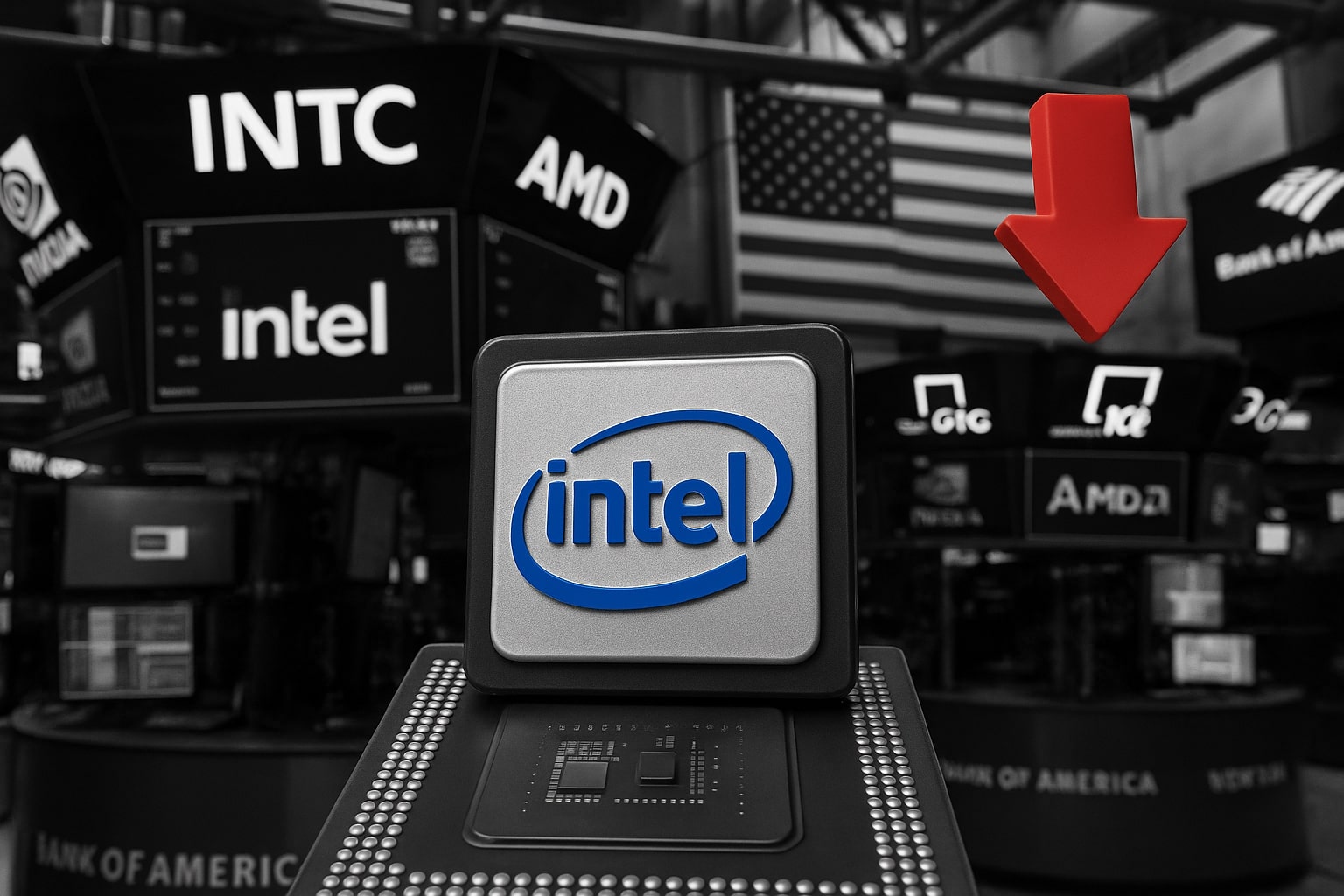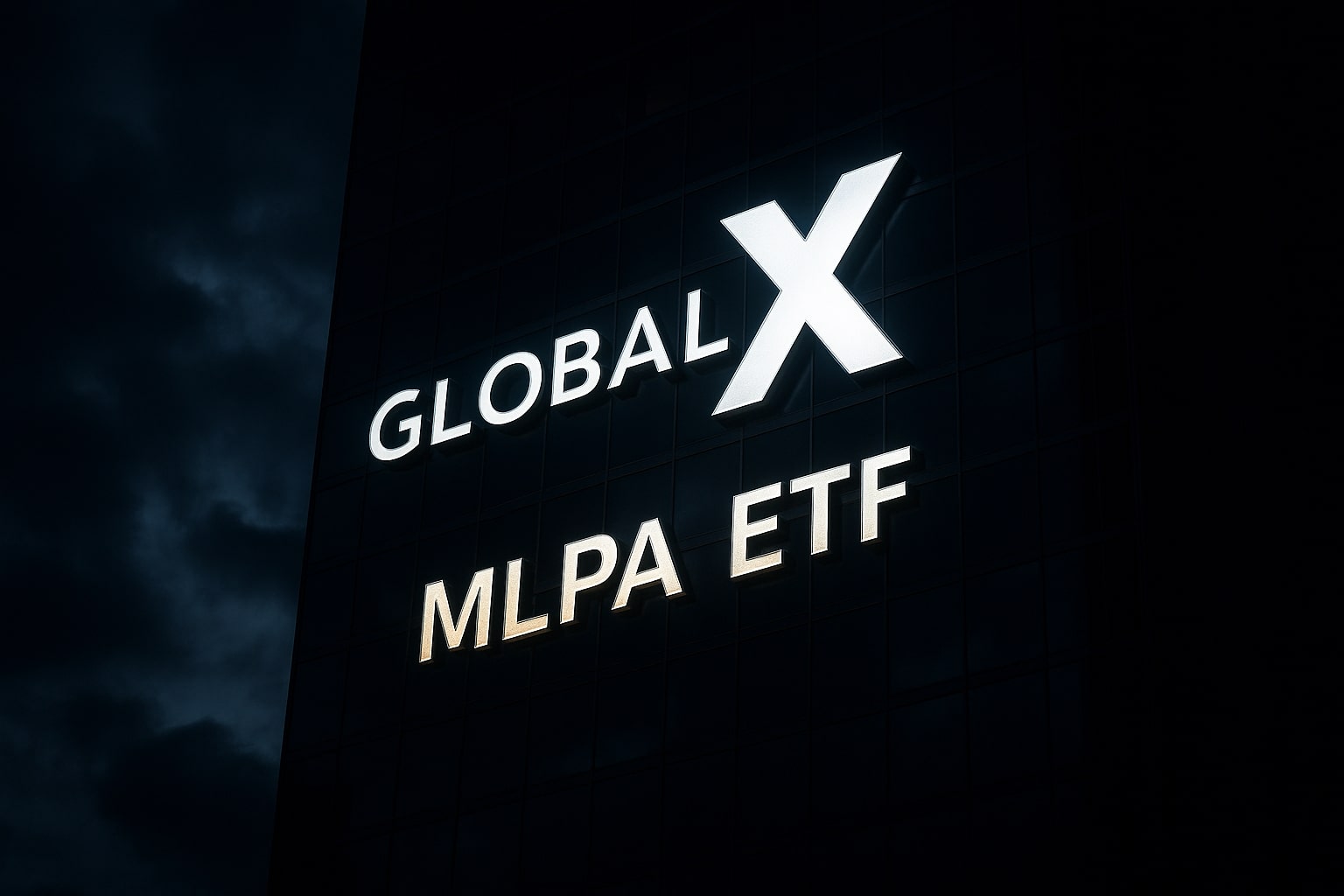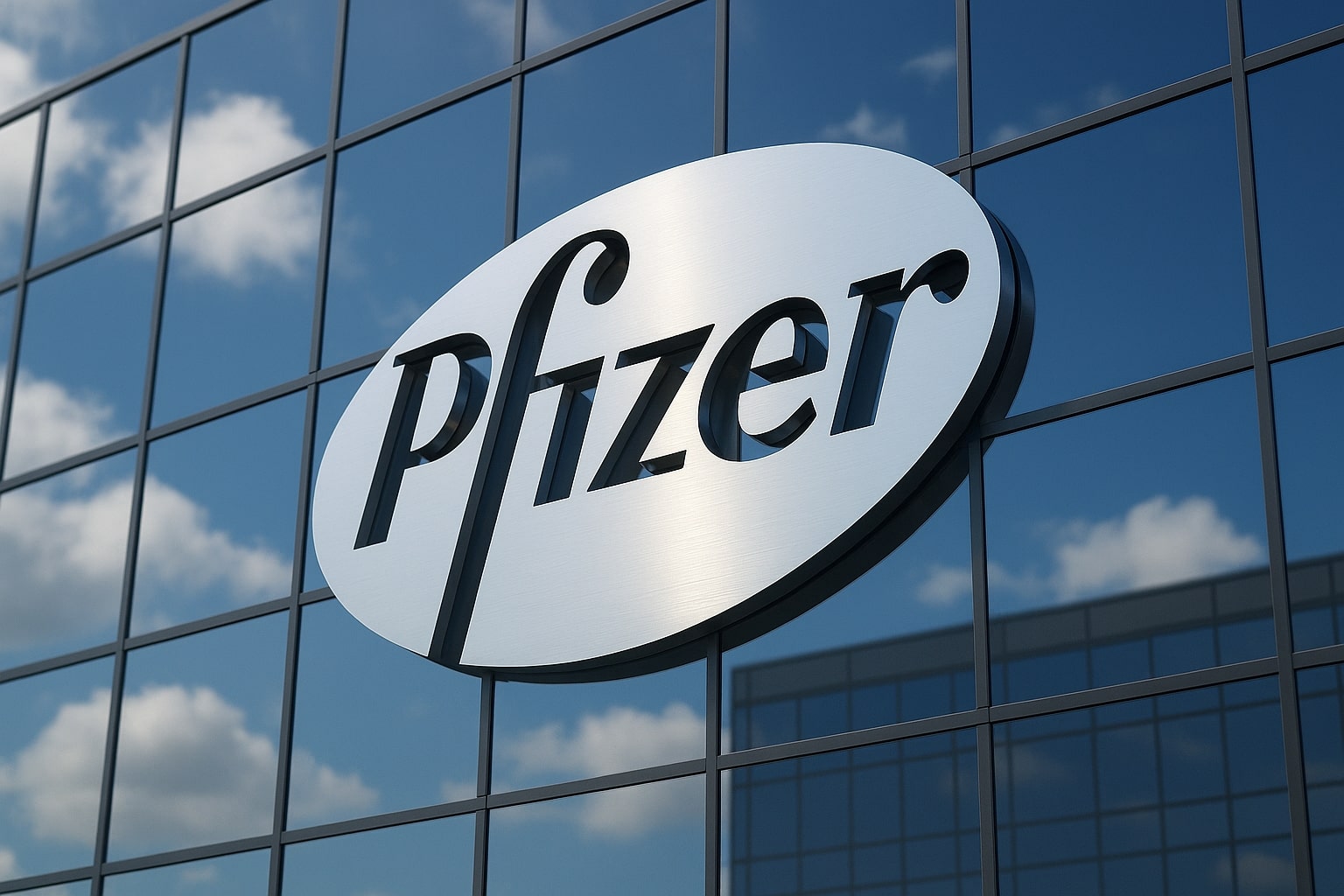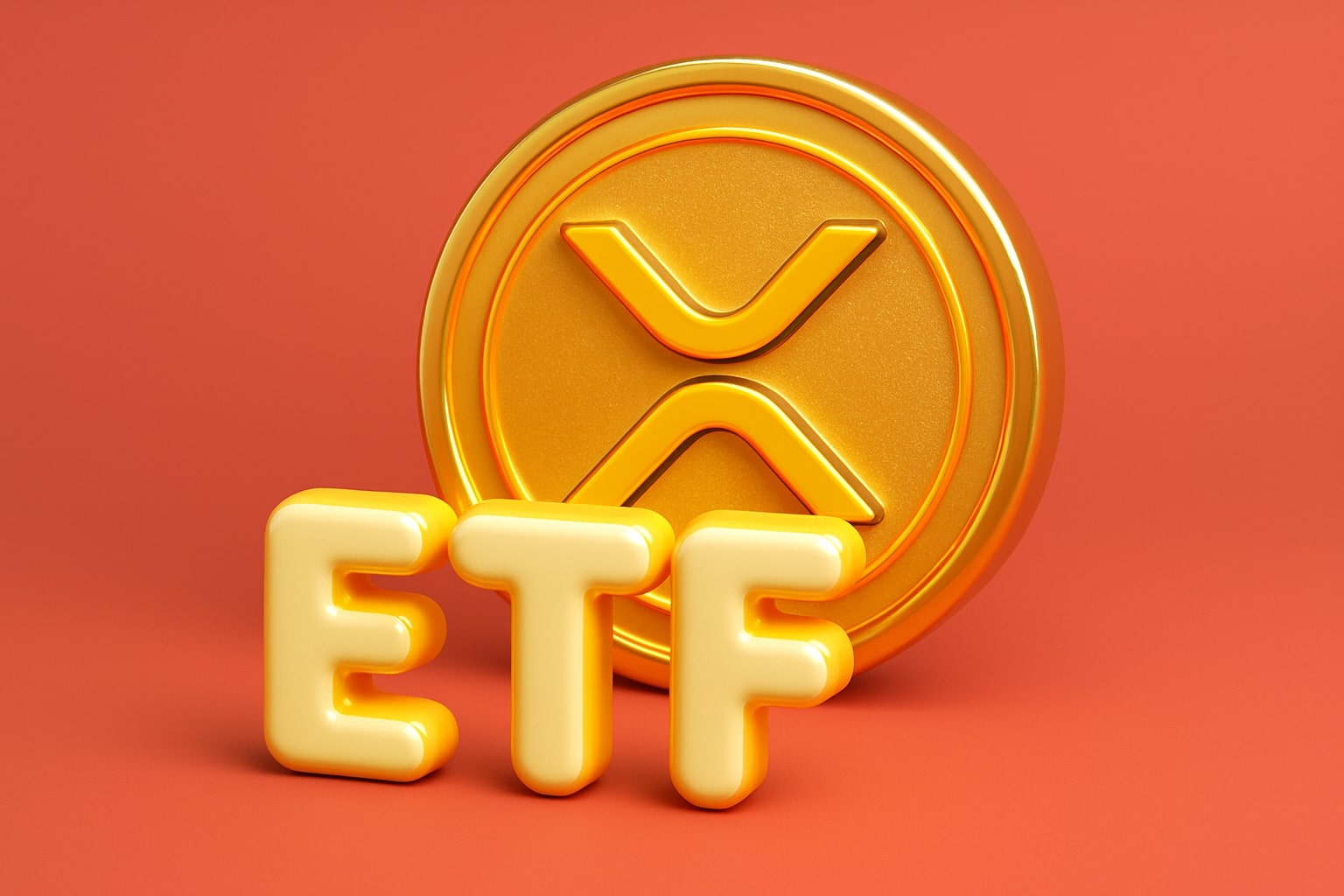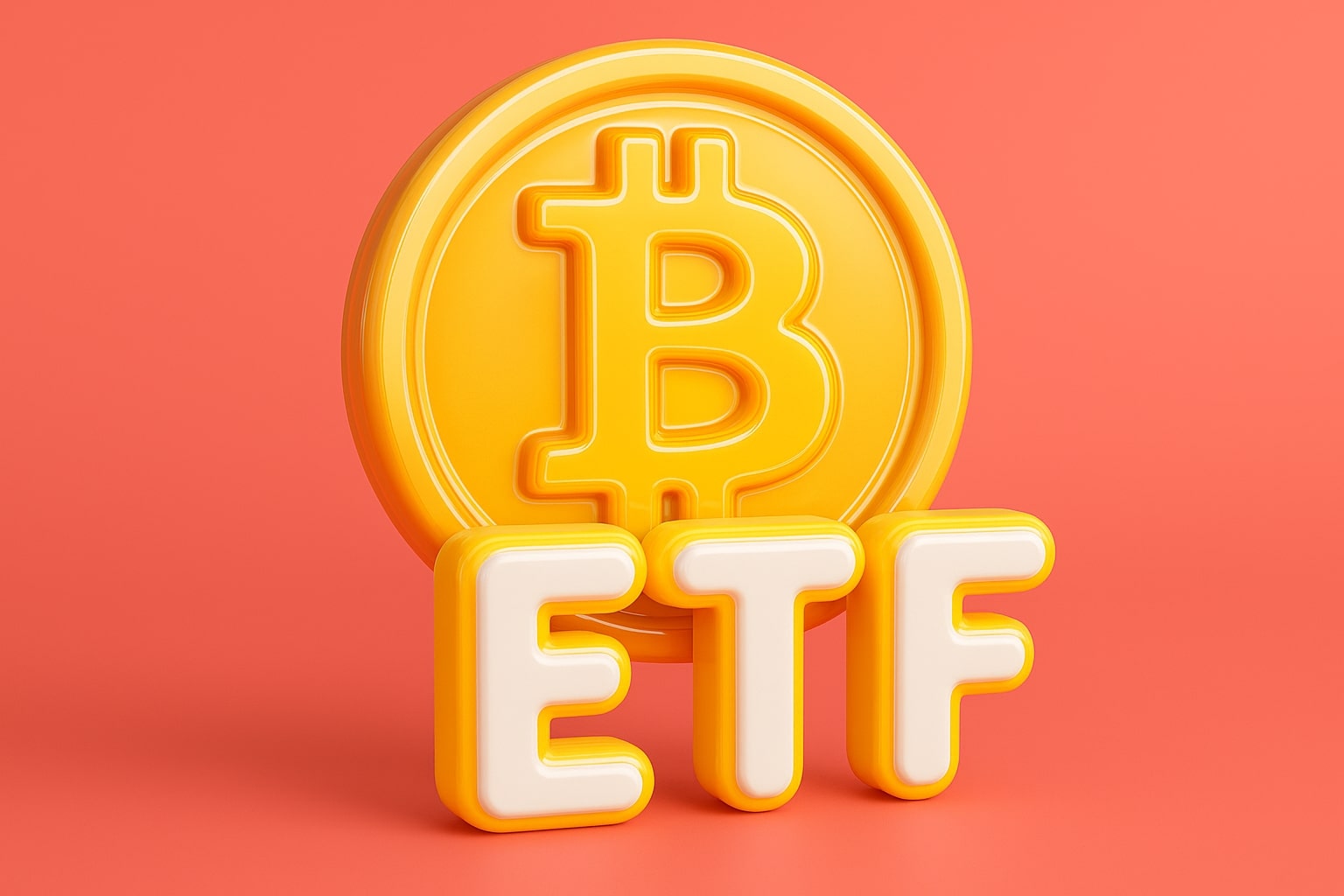Intel (NASDAQ:INTC) Faces Harsh Market Reality as Downgrades, Foundry Losses, and AI Lag Threaten Its Comeback
Intel Corporation (NASDAQ:INTC) is facing its most turbulent period since its historic decline in 2020–2022, as Wall Street turns sharply skeptical about the company’s turnaround story. The stock plunged 5.8% to $35.38 after Bank of America downgraded it to Underperform with a $34 target, citing valuation excess and fundamental weakness. Despite a 74.5% rally year-to-date that briefly lifted Intel near $37.80, analysts warn the rebound is “detached from reality.” Intel’s recent $80 billion market-cap surge, they argue, rests more on political funding and strategic hype than operational strength.
Intel’s Q2 results showed a ($0.10) EPS loss, missing consensus by $0.11, while revenue grew just 0.5% to $12.86 billion. The company’s gross margin collapsed to 29.7%, down from 34.6% last year, reflecting cost pressures and underutilized capacity at its struggling Intel Foundry Services (IFS) unit. With a -38.6% net margin and a negative return on equity of 18.6%, Intel’s profitability remains in free fall. Even after receiving an $11.1 billion U.S. government grant and a $5 billion investment from NVIDIA (NASDAQ:NVDA), analysts warn the foundry remains unprofitable through 2027. HSBC’s recent downgrade to Reduce with a $24 target labeled the rally “unsustainable,” echoing mounting doubts across Wall Street.
Wall Street Turns Divided on Intel’s IDM 2.0 Revival
Intel’s Integrated Device Manufacturing (IDM) 2.0 strategy—CEO Pat Gelsinger’s bold bid to restore U.S. semiconductor leadership—has polarized the market. Supporters hail it as a national industrial project; critics see it as a cash drain. The $50.7 billion debt load and negative $8.3 billion free cash flow underscore the financial strain of building new fabs while competing with TSMC (NYSE:TSM) and Samsung (KRX:005930) in advanced nodes. The company’s goal of delivering five process nodes in four years, culminating with the 18A node, remains behind schedule. Clearwater Forest, Intel’s flagship 18A server chip, has been delayed to H1 2026, while Panther Lake—the 18A-based AI PC chip—is now slated for late 2025.
Analysts are deeply divided. UBS holds a Neutral stance with a $40 target, citing gradual improvement in PC demand, while Citi and BofA both urge caution. Citi’s downgrade to Sell argues the rally “reflects hope, not execution,” emphasizing weak yield rates—reportedly under 10% in mid-2025—and limited AI traction. Meanwhile, BofA’s $34 target suggests Intel’s current price already prices in every optimistic outcome.
Institutional sentiment has also cooled. Northwest Capital Management cut its stake by 33.7%, now holding just 14,868 shares worth $333,000, while broader fund ownership remains at 64.5%, signaling cautious institutional positioning. The company’s forward P/E ratio of 56.5x dwarfs peers like AMD (NASDAQ:AMD) at 38x and TSMC at 26x, raising valuation concerns amid weak earnings visibility.
The AI Gap: Intel’s Missing Link in the New Chip Economy
The core of the bearish case is Intel’s struggle to define its role in the AI hardware revolution. Competitors AMD and NVIDIA have surged ahead with AI accelerators—AMD’s MI300 and MI350 chips are driving record data center demand, while NVIDIA’s Blackwell GPUs dominate the AI training market. Intel, in contrast, has yet to release a commercially competitive AI accelerator. Its Gaudi 3 chip, initially positioned to rival NVIDIA’s H100, saw limited adoption. Analysts describe Intel’s AI roadmap as “fragmented,” with multiple product cancellations—including Arctic Sound and Ponte Vecchio GPUs—highlighting inconsistent execution.
The company’s target of 100 million AI PCs shipped by the end of 2025 is ambitious but viewed skeptically. Even with the coming launch of Panther Lake, analysts doubt Intel’s ability to create meaningful differentiation against AMD’s Ryzen AI series. As AI PCs become the new growth segment for consumer chips, Intel risks being outpaced in both innovation and pricing leverage.
Europe’s Fallout and the Global Foundry War
Intel’s retrenchment from its planned Magdeburg, Germany fab, initially projected as a €17 billion facility, has caused political backlash in Europe. The decision to delay construction amid cost overruns and shifting subsidies underscores the strain of executing simultaneous projects across continents. The company’s plan to produce “state-of-the-art 1.8 nm wafers” in Germany was meant to symbolize European chip sovereignty. Now, with Intel redirecting resources toward Arizona and Ohio fabs, European policymakers are courting alternative partners like GlobalFoundries and TSMC.
While Intel benefits from U.S. support under the CHIPS and Science Act, this realignment leaves Europe exposed and raises questions about Intel’s global manufacturing footprint. The geopolitical risk compounds as Intel’s government-backed investors—like the U.S. Department of Commerce, which holds a 10% stake valued at roughly $16 billion—introduce new governance and regulatory complexities. Intel itself disclosed in an 8-K filing that the “scarcity of precedent for such government ownership” introduces legal and political uncertainty.
Financial Metrics Show Fragile Recovery Beneath the Surface
Despite the stock’s strong rebound from $17.67 lows to $39.65, Intel’s fundamentals remain fragile. The company posted a -3.8% operating margin and a -0.85% return on assets, indicating persistent inefficiency. The enterprise value-to-revenue multiple of 3.9x—up from 2.1x a year earlier—suggests inflated pricing relative to cash generation. Intel’s balance sheet lists $21.2 billion in cash but $50.76 billion in debt, leaving limited flexibility for capital expansion without further dilution or asset sales.
Quarterly revenue growth remains flat at 0.2% year-over-year, while normalized EBITDA fell to $9.0 billion, down sharply from $16 billion in 2022. Operating income has collapsed from $22 billion in 2021 to a loss of $4.3 billion in the latest quarter. Analysts project 2025 revenue of $52.0 billion, down 2% from 2024, with full-year EPS of $0.12, representing a tepid 192% increase from a negative base, but far from sustainable profitability.
Institutional Dynamics and Insider Behavior
According to Intel’s insider transaction records, executive selling has outpaced buying in recent months, signaling limited internal confidence. Hedge funds like Verdence Capital Advisors and Independent Wealth Network have marginally raised holdings, but large-scale accumulation remains absent. The short interest of 2.56%, while moderate, has been rising steadily since August—indicating bearish sentiment building into Q3 earnings.
The Market’s Verdict: A Showdown at Q3 Earnings
With Q3 results due October 23, 2025, Intel faces a defining moment. Analysts expect revenue of $13.11 billion and flat EPS near $0.01, with downside risk if Foundry losses expand. The company’s guidance will be critical—any delay in 18A production, further margin compression, or lack of foundry client announcements could trigger another selloff. Conversely, securing a landmark foundry contract—potentially with AMD or Microsoft (NASDAQ:MSFT)—could reframe sentiment.
Intel’s stock now trades at $35.38, roughly 9% below its 52-week high, but well above the average analyst target of $27.60. Out of 41 analysts, 2 rate it Buy, 22 Hold, and 8 Sell. This consensus reflects one of the most polarized outlooks in the semiconductor sector.
Outlook: High Risk, Narrow Path Forward
Intel’s future hinges on execution, not headlines. The short-term reality is harsh—negative margins, rising debt, AI product delays, and growing dependence on government aid. The long-term vision—a Western alternative to TSMC with full-stack AI capability—remains aspirational but distant. If Intel can lift 18A yields above 50% by Q4 and secure additional foundry clients, 2026 could mark a turning point. Until then, fundamentals argue for caution.
Verdict: SELL → Despite strategic importance and strong U.S. backing, Intel’s weak profitability, execution risk, and valuation excess outweigh near-term upside. Target range $26–$30 through 2026.
That's TradingNEWS














